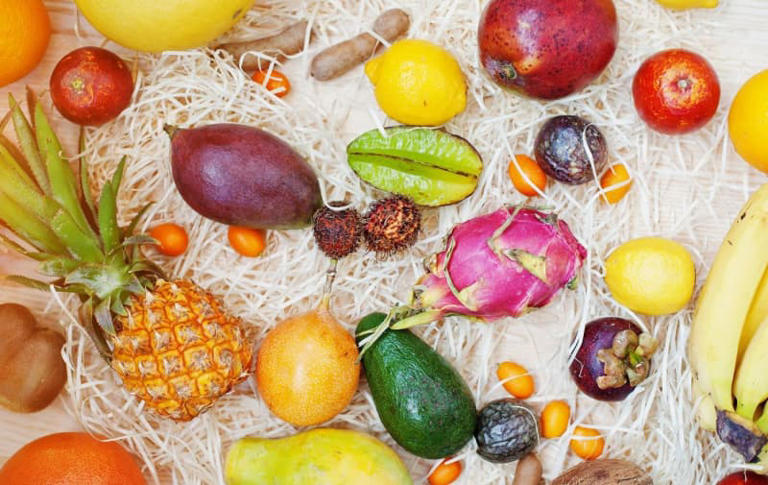The definitive guide to BMI, and how much you should really pay attention to it















The definitive guide to BMI, and how much you should really pay attention to it
For a measure that’s taken so often, Body Mass Index (BMI) is surprisingly controversial.
The BMI – which is not far off its 200th birthday, having been invented by the mathematician Adolphe Quetelet in the 1830s – is now a completely routine part of our lives.
It’s customary for doctors to measure their patients’ BMI and for scientists to record and analyse it in studies. That’s partly because it’s so easy to calculate: all you need to do is divide someone’s weight in kilograms by the square of their height in metres.
We’re all familiar with the charts, which split the BMI into arbitrary categories: if your BMI is below 18.5, you’re underweight; if it’s above 25 you’re overweight; and if it’s over 30, you’re obese. Official government statistics on obesity rates are based entirely on these BMI categories.
And yet, BMI is constantly under fire as a measure. There are articles providing the “top 10 reasons why the BMI is bogus”, implying that beyond these ten, there are many more.
BMI has been described as “inaccurate and misleading”. Other sources call it “flawed, crude, archaic, and [an] overrated proxy for health”.
A 2022 article by Harvard academics said BMI is “the organizing principle of a massively sprawling surveillance system”.
“BMI”, said one psychologist in a viral tweet last year, “is trash”.
It’s worth looking at some of those “top 10 reasons” for BMI’s uselessness, as they come up quite often. A few of them hinge on BMI being overly simplistic. It doesn’t, for example, include information on waist size or the proportion of fat in someone’s body. For that reason, it’s going to miscategorise people whose weight is high because they have a lot of muscle or a high bone density, saying they’re overweight and implying they’re unhealthy.
But although BMI doesn’t expressly include waist size or body fat percentage, it is very strongly correlated with those measures. That is, people who have higher BMI are much more likely to have higher values on these measures too. On the standard correlation scale where 0.0 means there’s no relation whatsoever and 1.0 means there’s a perfect positive correlation, BMI and waist circumference are often shown to be correlated at nearly 0.9; the correlation between BMI and body fat percentage is a bit lower at somewhere between 0.7 and 0.8.
The fact that these aren’t perfect correlations leaves plenty of room for outliers: body-builders with huge amounts of muscle who have a high BMI despite very low body fat, say, or people with relatively low overall BMIs but a high proportion of fat. And it means that, at least in some studies, taking into account waist circumference and body fat percentage as well as BMI can help make even better predictions of people’s health.
But they’re called outliers for a reason. They’re exceptions to the very broad trend: these very strong correlations mean that BMI actually tells us a great deal about the average person’s waist size and body fat percentage.
The common criticism of BMI for not being a perfect correlate of other important measures is a double standard: there are all sorts of non-perfect correlations that we take for granted, and sometimes see fit to act on. The vast majority of the evidence on the relation between sleep quality and health, the relation between living in a city with high pollution levels and asthma, or the relation between eating sugar and tooth decay, to take just a few examples, comes from correlations that are an awful lot lower than that of BMI with waist size and body fat percentage, and yet there’s very little attempt to pick them apart.
It’s all very well correlating together different bodily measures, but that doesn’t tell us what we really want to know, which is whether BMI is a good “proxy for health”. How good is BMI at predicting people’s risk of illness and their risk of early death?
It’s clear from reviews of the evidence that BMI is a commonly-found risk factor for all sorts of health conditions. Perhaps most prominent are heart-related problems: for issues including heart attack, atrial fibrillation, and sudden cardiac death, BMI can be an appreciable risk factor.
That’s not to say it’s a brilliant measure of these outcomes, or even the best measure we have in theory. In a perfect world we’d have even more measurements of body composition for every person, like fat percentage, bone density, and more. These measures are often discussed as predicting health problems “independently of BMI”. But, as noted above, that normally means that BMI itself explains a big chunk of the risk and these other factors can make the prediction even better.
But as part of a suite of different pieces of information we can have about a person, BMI plays a significant role in predicting their health. Given how much we can learn from something that’s so cheap and easy to measure, and if you’ll excuse the pun, it punches above its weight.
And it’s not just physical health: recent large-scale reviews of the scientific literature find that obesity, measured by BMI, is related to a 10 to 30 per cent increase in the risk of depression in adults, and a nearly 80 per cent higher risk of depression in children. Of course, a substantial part of this relation could be due to the stigma of being obese, but it remains possible that some of the higher levels of bodily inflammation that come from obesity might be part of the cause of mental health problems.
What about the most final outcome of all: mortality? If you imagine the graph with BMI on the x-axis and risk of early death on the y-axis, the relationship is a wide U-shape: people with very low BMIs and those with very high BMIs are much more likely to die earlier.
But the question is where the bottom part of the U lies, and how flat it is before it starts rising. A large study from July this year found that, while those in the obese category were definitely at higher risk of early mortality (up to 108 per cent more likely to die in the nine years after their BMI was measured), there wasn’t much of an extra risk in the “overweight” category. Of course, being overweight has been associated with increasing risk of other, non-fatal health conditions, but it’s a useful reminder that not all risks rise with increasing weight in a simple and straightforward line.
Of course, an even bigger criticism here is that all these correlations and associations aren’t causal. Yes, BMI is related to these health outcomes, and yes, it seems to remain related to them after you take into account other factors like education and income. But we know from many different cases that even this could be confounded by some other factor that we haven’t measured in our purely correlational studies.
This is where the new weight-loss drugs can help us: we can now run experiments where we randomise people to a treatment which we know will substantially reduce their BMI (that is, taking a drug like semaglutide), and then wait to see what effects this has on their health. We now have evidence from studies of patients with and without diabetes showing that lowering BMI did indeed cause a lower likelihood of major cardiovascular events like heart attacks (and there’s similar evidence from patients who’ve had bariatric surgery).
A blinkered focus on any one single measure is always a bad idea: whether it’s your BMI, your resting heart rate, your cholesterol levels, your exam grades, or your IQ score, every measurement inherently includes errors and will never be perfectly related to whatever it is you really want to know, like your overall health and fitness, your risk of illness, your academic potential, your happiness, or anything else.
And bear in mind that the studies are all focusing on overall relationships across samples of people: as we saw in our discussion of outliers, there will always be people who buck the trend, and that’s just by definition when we have imperfect correlations between variables (another way of putting it is that your BMI doesn’t “necessarily” tell you about your own health levels).
To focus too much on the trend-bucking individuals is to be like the people who refer to their great-grandmother who survived to age 105 while smoking 10 packs of cigarettes a day. Yes, it’s possible, but your great-grandmother isn’t representative of the average person and shouldn’t be part of the advice we give to the average person on whether to start smoking.
Many of the criticisms of BMI are effectively arguments that we – individuals, doctors, scientists – should only use measurements when they’re perfect, rather than when they’re useful. If that’s your standard, we can rule out effectively all the ways of measuring things in the world, which will always produce outliers, and will always come with their own limitations.
To the extent to which the reasoned criticisms of BMI have led us to consider those limitations, they’ve been a very good thing: everyone who uses any measure should be aware of its pros and cons.
But the criticisms of BMI have been grossly overstated. Whereas it’s fair to say that BMI is far from a perfect measure, and can sometimes be misleading, it’s also silly to call it “bogus” or “trash” and encourage people to disregard it entirely.
If we want to understand our societal obesity problem, BMI is just one tool among many – but it’s a disproportionately helpful one.
The nightly ritual that could improve memory and brain health, according to scientists











The nightly ritual that could improve memory and brain health, according to scientists
In older age, mild cognitive impairment is typical, but it becomes a risk factor for dementia.
Yet, one simple change before you go to bed may be beneficial, according to research carried out by the UCI (University of California, Irvine) Center for the Neurobiology of Learning and Memory.Link
As part of the study, 43 older adults between the ages of 60 to 85 were enrolled and randomly placed into one of two groups:
- The olfactory enriched group
- Control group.
Individuals in the olfactory enriched group used an essential oil diffuser by their bedside for two hours, each night, over six months; the control group did not.
The olfactory group were exposed to seven different scents throughout the experiment, such as:
- Rose - Lemon - Orange - Lavender - Eucalyptus - Peppermint - Rosemary.
Neuropsychological assessments and fMRI scans were administered at the beginning of the study and after six months - and the results were astonishing.
Older adults exposed to nightly scents showed a 226 percent greater improvement in a word recall memory test compared to the control group.
Brain imaging also revealed improved integrity in the memory-related brain pathway that typically declines with age.
Senior author of the scent study, Michael Yassa, said: "The olfactory sense has the special privilege of being directly connected to the brain's memory circuits."
The study concluded: "Olfactory enrichment may provide an effective and low-effort pathway to improved brain health."
Mild cognitive impairment
The National Institute on Ageing says mild cognitive impairment (MCI) describes memory or thinking problems that are not severe enough to be diagnosed as dementia.
Signs of MCI include:
- Losing things often - Forgetting to go to events or appointments - Having more trouble coming up with words than other people of the same age.
People diagnosed with MCI are recommended to see a doctor or specialist every six to 12 months to keep an eye on the health condition.
An estimated 10 to 20 percent of people aged 65 or older who have MCI develop dementia over a one-year period.
There are ways, however, to minimise your risk of dementia, according to the NHS.
"There's good evidence that a healthy lifestyle can help reduce your risk of developing dementia when you're older," the health body states.
The study findings were published in the journal Frontiers in Neuroscience.
Hyacinth Bean: How Nutritionists Rate Its Nutrients, Health Effects, And More












Hyacinth Bean: How Nutritionists Rate Its Nutrients, Health Effects, And More
Perspective from Victoria Andrews
Master of Nutrition and Dietetics · 1 years of experience · Australia
Benefits
- There is some evidence to suggest hyacinth bean may improve diarrhoea and stomach cramps, however, further research is needed to clarify this claim.
- Hyacinth beans are great source of iron. Iron is needed to transport oxygen within cells, iron deficiency is associated with fatigue and low energy levels.
- Hyacinth beans are high in copper, which is essential for brain pathways which help maintain mood and focus.
Side Effects
- Raw hyacinth beans are not recommended for consumption, as they contain chemicals called cyanogenic glycosides which can be poisonous if eaten in large amounts.
Perspective from Lucía Ramos
Bachelor of Science · 8 years of experience · Argentina
Benefits
- Hyacinth bean is effective in reducing the risk of colon cancer. Legumes contain a type of fiber that in the colon generates short chain fatty acids. Those fatty acids helps the colon microbiota and feeds beneficial bacteria.
Side Effects
- Diabetic individuals could choose hyacinth beans as a good source of carbohydrates. They must combined them with vegetables and control the portion.
Top healthiest fruits with anti-inflammatory properties














Top healthiest fruits with anti-inflammatory properties
Fruits possess anti-inflammatory properties as they contain numerous antioxidants and fiber. While they cannot replace medical treatments, they can significantly alleviate some conditions, writes Real Simple.
The ways fruits reduce inflammation
There are two different types of inflammation that may occur in your body.
"The first type, called acute inflammation, is the short-term pink or red or swelling around a wound that happens while the wound is healing,” says dietitian Janice Chow.
This type of inflammation is beneficial for your body, as it is a natural response of your system to an unwanted intrusion (injury, illness, infection, etc.).
Chronic inflammation is the second type of inflammation, and if left untreated, it can cause even more harm to your health. It is called "chronic" because it does not subside and lasts for a more extended period.
"Chronic inflammation could be triggered by various factors, like external and internal traumas. It might be diseases or conditions that a person might have, or a prolonged environmental impact [that they’ve experienced]," adds Chow.
Examples of environmental triggers include psychological stress, air pollution, and poor nutrition. Chronic inflammation resulting from these triggers can create an environment conducive to the onset of diseases.
According to Chow, many types of fruits have strong anti-inflammatory properties because they contain nutrients and compounds that help reduce this chronic inflammation, paying special attention to two main groups of compounds found in food: antioxidants and fiber.
"The role of antioxidants is to neutralize some of the unstable molecules in our body that might happen during inflammation," explains Chow.
Unstable molecules, called free radicals, are produced when your body is constantly exposed to environmental factors such as air toxins, alcohol consumption, stress, poor nutrition, and more.
"An excessive amount of these unstable molecules may cause longer-term damage to our cells, and there are theories that this kind of cellular damage may lead to chronic diseases," adds the expert.
Increased consumption of antioxidants from food (mostly plant-based) can help neutralize these unstable molecules.
Research also points to fiber as another of the most beneficial compounds for reducing chronic inflammation. One way in which fiber can achieve this is by maintaining the pH level of the intestines, which reduces the number of inflammatory molecules.
Top anti-Inflammatory fruits
Apples
They can almost always be found in the nearest grocery store, so it's worth not forgetting about them when making a shopping list. Apples are excellent sources of antioxidants, namely vitamin C, quercetin, and flavonoids, and some varieties are rich in fiber, especially in the skin.
Berries
Research indicates that consuming berries is associated with a lower risk of diseases. According to Chow, berries are rich in fiber and antioxidants, such as vitamin C.
For example, half a cup of strawberries provides you with 50% of the recommended daily intake of vitamin C. Berries also contain a lot of quercetin, carotenoids, and anthocyanins.
Anthocyanins are plant pigments that give cranberries, strawberries, blueberries, raspberries, and blackberries their beautiful red, purple, and blue colors.
Stone fruits
According to Chow, peaches, plums, and cherries are rich in antioxidants such as vitamin C, vitamin A, anthocyanins, and phenolic acid. They also provide you with a good amount of fiber.
Red and black grapes
"Red and black grapes are well known for an antioxidant called resveratrol, which is found in their skin. The skin also contains a lot of fiber, so I would highly suggest consuming grapes with their skin on," recommends the expert.
This darker grape variety is also rich in other antioxidants such as vitamin C, vitamin B2, anthocyanins, quercetin, and flavonoids.
Citrus fruits
All citrus fruits, including oranges, grapefruits, lemons, and limes, are rich in antioxidants such as flavonoids and vitamin C. Half a cup of grapefruit provides 40% of the recommended daily intake of vitamin C. They also contain a lot of fiber.
"One word of caution with grapefruit is that some medications could potentially react with it, so I would consult with your doctor before eating it," says the dietitian.
Pomegranate seeds
When you eat the juicy, crunchy ruby-red seeds of a pomegranate, you benefit from both fiber and antioxidants like vitamin C, anthocyanins, tannins, and phenolic acid. These nutrients are extremely beneficial and are a tasty addition to both sweet and savory dishes.
Pineapple
Pineapple contains a compound called bromelain, which has anti-inflammatory properties. Pineapple is also a good source of fiber and antioxidants such as vitamin C and vitamin A.
Watermelon
Watermelon is known for its vibrant red color, which is attributed to another powerful antioxidant called lycopene. It is also an excellent source of vitamin C.
Previously, we wrote about the best products with healing properties which are recommended for those who want to become healthier.
We also discussed the importance of potassium for the human body and where to find it.
Articles - Most Read
- Home
- LIVER DIS-EASE AND GALL BLADDER DIS-EASE
- Contacts
- African Wholistics - Medicines, Machines and Ignorance
- African Holistics - Seduced by Ignorance and Research
- African Wholistics -The Overlooked Revolution
- The Children of the Sun-3
- Kidney Stones-African Holistic Health
- PART ONE: DIS-EASE TREATMENT AND HEALTH-3
- 'Tortured' and shackled pupils freed from Nigerian Islamic school
- The Serpent and the RainBow-The Jaguar - 2
- PART ONE: DIS-EASE TREATMENT AND HEALTH-2
- PART ONE: DIS-EASE TREATMENT AND HEALTH-4
- PART ONE: DIS-EASE TREATMENT AND HEALTH-5
- King Leopold's Ghost - Introduction
- African Wholistics - Medicine
- Menopause
- PART ONE: DIS-EASE TREATMENT AND HEALTH-6
- The Mystery System
- The Black Pharaohs Nubian Pharaohs of Ancient Egypt
Who's On Line?
We have 30 guests and no members online
Ad Agency Remote
Articles - Latest
- Burdock – 7 Amazing Benefits & Nutrition Facts
- Ask A Nutrition Professional: Can Eating Raw Zucchini Cause Pain?
- Five things I wish I knew before starting hormones as a trans person
- ‘Hidden’ bacteria could explain chronic urinary tract infections
- Chinese scientists create mutant Ebola virus in lab
- ‘Magic mushrooms’ could be effective antidepressant after one dose, study suggests
- Does Valerian Root Cause Weight Gain? A Review By Nutrition Professionals
- No Salt Alternatives
- The world’s deadliest infectious disease is on the rise in the UK
- The Best Substitutes for Allspice
- What is gender dysphoria and how can you support your trans friends?
- Pioneering cooling boots and mittens to help stop chemo side-effect
- Ask A Nutrition Professional: How Do I Prepare Yellow Squash?
- The anti-ageing benefits of eating protein
- New analysis of cancer cells identifies 370 targets for smarter, personalized treatments
- Pattypan Squash: Nutrition Professionals Weigh In on the Right Amount.
- Ways to manage chronic pain
- The more fertile you are, the sooner you may die — study Story by Fred Schwaller
- You stand like an overcooked prawn!’ Why bad posture is the key to back pain – and 10 ways to improve yours






